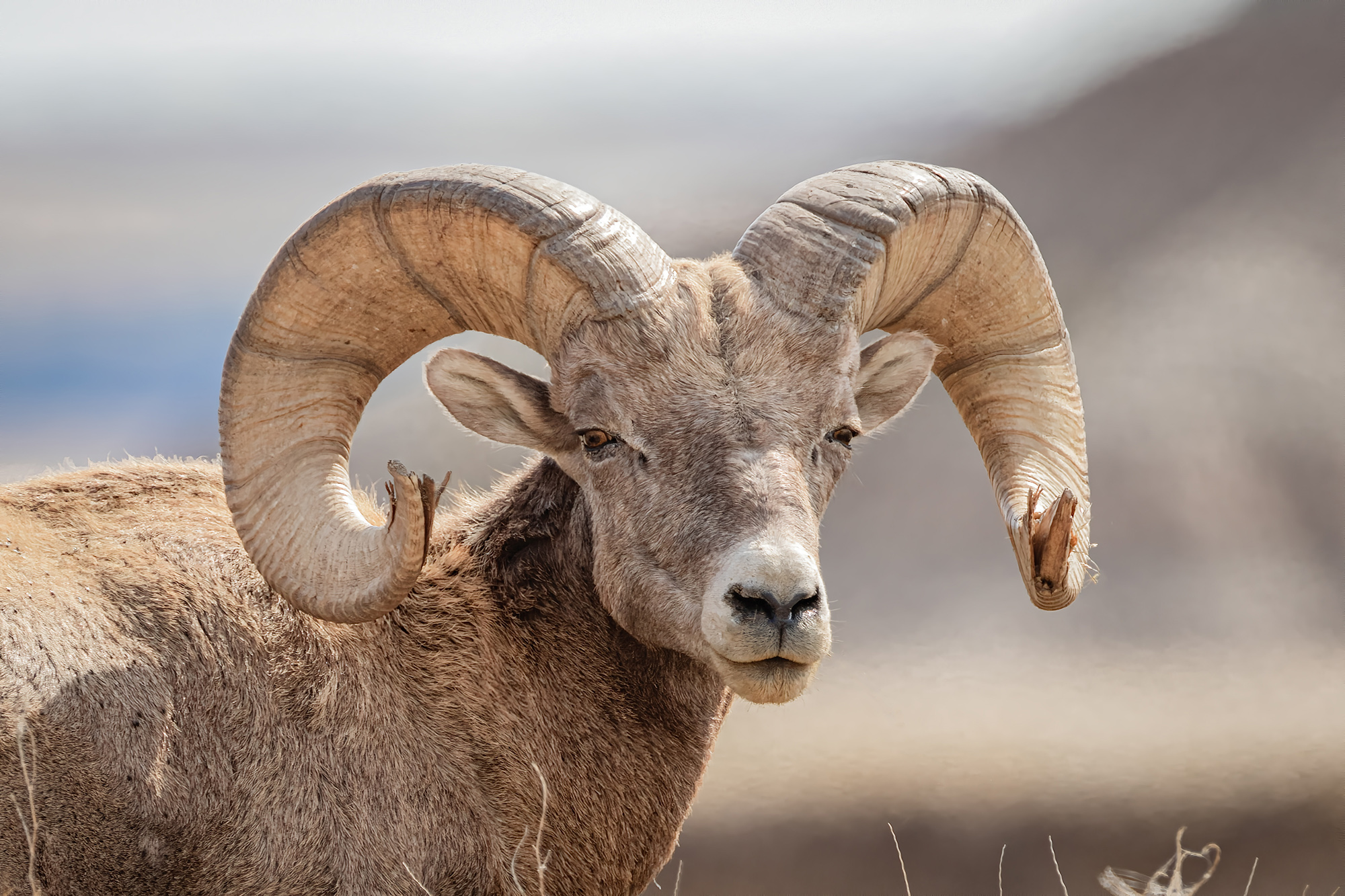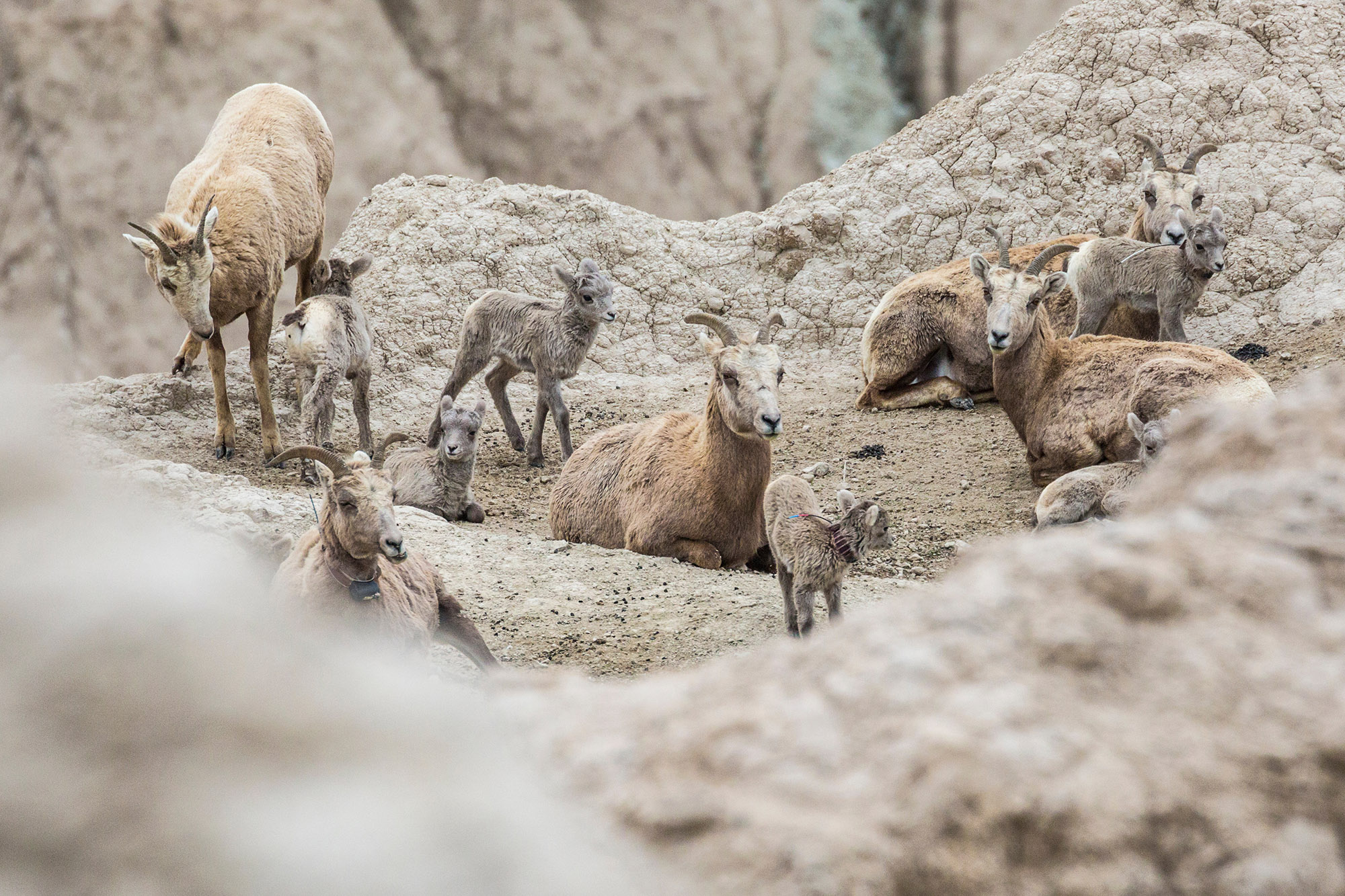Wildlife biologists discovered symptomatic and dead sheep in the Hell Canyon herd while conducting a collaring project. The die-off could be significant, officials say

Pneumonia was discovered in a premiere bighorn hunting unit in South Dakota. Photo by tomolsonphoto.com / Adobe Stock
South Dakota Game, Fish, and Parks wildlife division director Tom Kirschenmann interrupted a commission meeting Thursday to share some troubling news with attendees: the Hell Canyon herd of bighorn sheep is likely in the early stages of a pneumonia outbreak.
SDGFP biologists were recently conducting a collaring project in Hell Canyon (not to be confused with Hells Canyon in Idaho, where sheep pneumonia has also been an issue) when they noticed sheep coughing and exhibiting lethargy, Kirschenmann says. As biologists investigated further, they discovered multiple dead sheep.
“It’s always troubling and discouraging to give you bad news,” Kirschenmann says. “In Hell Canyon, one of our premier units that we offer licenses for hunting opportunities, our capture crew witnessed multiple sheep coughing and not doing well. We had the opportunity to deploy 22 radio collars on bighorn sheep in that particular area. Many of them were coughing. We did locate a few mortalities as well.”
Biological samples are currently undergoing testing to determine for sure that any one of the many bacteria that cause sheep pneumonia is to blame, Kirschenmann says. Biologists deployed all the radio collars, which will be used to further monitor the herd — particularly for more deaths.
“Based on the number, we would anticipate … a significant event. We’re going to watch it closely,” he says. “We’ve had so many success stories related to bighorn sheep management in South Dakota. We’ve made great strides in bringing bighorn sheep numbers back. But unfortunately we are witnessing something right now that could be a significant mortality event, so we’re going to continue and watch it over the next 30 days.”

Pneumonia in sheep is 50 to 80 percent fatal. Unfortunately, like most other wildlife diseases, no known cure exists, and the only management option is to try keeping wild sheep from contracting the disease in the first place. Breakouts usually occur when wild sheep come in contact with domestic sheep that carry the pathogen. Wild sheep can then pass the pathogen to their offspring, resulting in low lamb recruitment in previously-impacted herds.
Meanwhile, SDGFP has been considering a proposal to increase the number of bighorn sheep tags available to hunters, including for the Hell Canyon herd. But this discovery could affect tag allocations. (Only South Dakota residents are currently allowed to hunt bighorn sheep in the state.) In 2023, more than 12,600 resident hunters applied for just seven ram tags in the Black Hills, which contains the Hell Canyon herd. A 2020 report from the SDGFP commission noted the Hell Canyon bighorn population contained a maximum of 76 sheep.
Kirschenmann assured the commission there would be an update on the pneumonia outbreak at the next meeting in early April.
Read Next: Reward for Intel on Oregon Bighorn Poacher Hits $4,500 as Conservation Orgs Chip in
“We did have the number of rams available for some unique hunting opportunities and we wanted to provide that wonderful experience to our bighorn sheep hunters,” Kirshenmann says. “We will learn a lot over the next few weeks to next month.”
